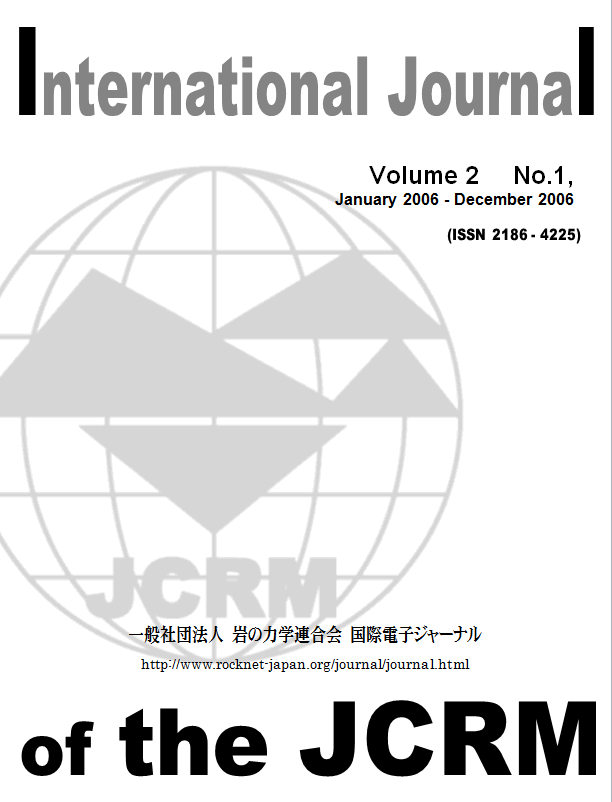A non-dimensional second rank tensor
Fij, called the crack tensor, has successfully been introduced to deal with geometrical aspects of microcracks (fabric) such as anisotropy and crack density. Unfortunately, however, its usage for practical purposes is rather limited because its determination involves tedious and time-consuming laboratory work. We seek the possibility of using the directional change of longitudinal wave velocities to conquer the difficulty associated with the determination of crack tensors. A new second-rank tensor
Vij is introduced, such that the directional change in the longitudinal wave velocities is represented in terms of the tensor, and the crack tensor
Fij is then given as a function of
Vij. Based on the analyses of the crack tensors for one intact and several damaged samples of Inada granite, we then discuss how microcracks grow through the whole inelastic process, terminating at brittle failure. The conclusions are summarized as follows: The second-rank symmetrical tensor
Vij (or its inversion tensor
Vij-1) can be determined experimentally, with sufficient accuracy from the directional change in the squared longitudinal wave velocity. It is found that the tensor changes markedly so as to reflect the fabric of the damaged Inada granite formed by open microcracks. The principal axes of
Vij-1 are coaxial with the principal axes of
Fij so that both tensors are correlated in terms of their principal values
Fi and
Vi-1.
抄録全体を表示
